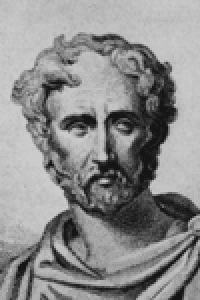1. Trace the history of zoology through making a concept map
2. Develop understanding in the beginning of zoology
History.

The study of zoology can be viewed as a series of efforts to analyze and classify animals. Attempts at classification as early as 400 BC are known from documents in the Hippocratic Collection. Aristotle, however, was the first to devise a system of classifying animals that recognized a basic unity of plan among diverse organisms; he arranged groups of animals according to mode of reproduction and habitat. Observing the development of such animals as the dogfish, chick, and octopus, he noted that general structures appear before specialized ones, and he also distinguished between asexual and sexual reproduction. His Historia Animalium contains accurate descriptions of extant animals of Greece and Asia Minor. He was also interested in form and structure and concluded that different animals can have similar embryological origins and that different structures can have similar functions.

In Roman times Pliny the Elder (WHOSE PHOTO IS AT THE SIDE) compiled four volumes on zoology in his 37-volume treatise called Historia Naturalis. Although widely read during the Middle Ages, they are little more than a collection of folklore, myth, and superstition. One of the more influential figures in the history of physiology, the Greek physician Galen, dissected farm animals, monkeys, and other mammals and described many features accurately, although some were wrongly applied to the human body. His misconceptions, especially with regard to the movement of blood, remained virtually unchanged for hundreds of years. In the 17th century, the English physician William Harvey established the true mechanism of blood circulation.

Until the Middle Ages, zoology was a conglomeration of folklore, superstition, misconception, and descriptions of animals, but during the 12th century it began to emerge as a science. Perhaps the most important naturalist of the era was the German scholar St. Albertus Magnus, who denied many of the superstitions associated with biology and reintroduced the work of Aristotle. The anatomical studies of Leonardo da Vinci were far in advance of the age. His dissections and comparisons of the structure of humans and other animals led him to important conclusions. He noted, for example, that the arrangement of joints and bones in the leg are similar in both horses and humans, thus grasping the concept of homology (the similarity of corresponding parts in different kinds of animals, suggesting a common grouping). The value of his work in anatomy was not recognized in his time. Instead, the Belgian physician Andreas Vesalius is considered the father of anatomy; he circulated his writings and established the principles of comparative anatomy. See ANATOMY
Classification dominated zoology throughout most of the 17th and 18th centuries. The Swedish botanist Carolus Linnaeus developed a system of nomenclature that is still used today—the binomial system of genus and species —and established taxonomy as a discipline. He followed the work of the English naturalist John Ray in relying upon the form of teeth and toes to differentiate mammals and upon beak shape to classify birds. Another leading systematist of this era was the French biologist Comte Georges Leclerc de Buffon. The study of comparative anatomy was extended by such men as Georges Cuvier, who devised a systematic organization of animals based on specimens sent to him from all over the world.Although the word cell was introduced in the 17th century by the English scientist Robert Hooke, it was not until 1839 that two Germans, Matthias Schleiden and Theodor Schwann, proved that the cell is the common structural unit of living things. The cell concept provided impetus for progress in embryology, founded by the Russian scientist Karl von Baer, and for the development by a Frenchman, Claude Bernard, of the study of animal physiology, including the concept of homeostasis (the stability of the body’s internal environment). See CELL,; PHYSIOLOGY,.The organization of scientific expeditions in the 18th and 19th centuries gave trained observers the opportunity to study plant and animal life throughout the world. The most famous expedition was the voyage of the Beagle in the early 1830s. During this voyage, Charles Darwin observed the plant and animal life of South America and Australia and developed his theory of evolution by natural selection. Although Darwin recognized the importance of heredity in understanding the evolutionary process, he was unaware of the work of a contemporary, the Austrian monk Gregor Mendel, who first formulated the concept of particulate hereditary factors—later called genes. Mendel’s work remained obscure
Activity:
trace the history of zoology by making a concept map.
Reference: http://www.history.com/encyclopedia.do?articleId=226469
